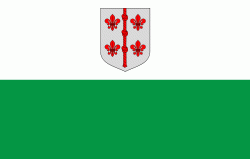Hiiu County (Hiiumaa)
 |
 |
Human habitation of Hiiumaa can be traced back to the fifth millennium BC. Mesolithic sites in Kõpu peninsula are exemplified by the seal-hunters' settlements. There are several well-preserved grave fields of the Iron Age. In 1228, the island was first mentioned in written annals under the name Dageida. In 1254, Hiiumaa was divided between the Livonian Order and the Bishopric of Ösel-Wiek. In 1563 Hiiumaa was annexed into Sweden. In 1710, as a result of the Great Northern War the island went under the control of the Russian Empire. During World War I, the German military forces occupied Hiiumaa in 1917. In 1918–1940 Hiiumaa was part of the Republic of Estonia, then until 1991 occupied by the Soviet Union.
On demands of the Hanseatic League a lighthouse was built in Kõpu (previously known as Dagerort) at the beginning of the 16th century. It is considered the third-oldest continuously operating lighthouse in the world, still showing its light to 35 mi of the sea.
Most of the farm architecture comes from the 19th century. Prominent examples include the Mihkli farming complex and Soera farm-museum with historical national artifacts, respectively.
Map - Hiiu County (Hiiumaa)
Map
Country - Estonia
 |
 |
| Flag of Estonia | |
The land of what is now modern Estonia has been inhabited by Homo sapiens since at least 9,000 BC. The medieval indigenous population of Estonia was one of the last pagan civilisations in Europe to adopt Christianity following the Papal-sanctioned Livonian Crusade in the 13th century. After centuries of successive rule by the Teutonic Order, Denmark, Sweden, and the Russian Empire, a distinct Estonian national identity began to emerge in the mid-19th century. This culminated in the 24 February 1918 Estonian Declaration of Independence from the then warring Russian and German Empires. Democratic throughout most of the interwar period, Estonia declared neutrality at the outbreak of World War II, but the country was repeatedly contested, invaded and occupied, first by the Soviet Union in 1940, then by Nazi Germany in 1941, and was ultimately reoccupied in 1944 by, and annexed into, the USSR as an administrative subunit (Estonian SSR). Throughout the 1944–1991 Soviet occupation, Estonia's de jure state continuity was preserved by diplomatic representatives and the government-in-exile. Following the bloodless Estonian "Singing Revolution" of 1988–1990, the nation's de facto independence from the Soviet Union was restored on 20 August 1991.
Currency / Language
| ISO | Currency | Symbol | Significant figures |
|---|---|---|---|
| EUR | Euro | € | 2 |
| ISO | Language |
|---|---|
| ET | Estonian language |
| RU | Russian language |

















